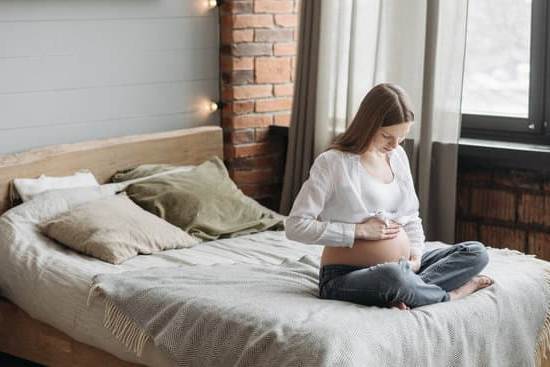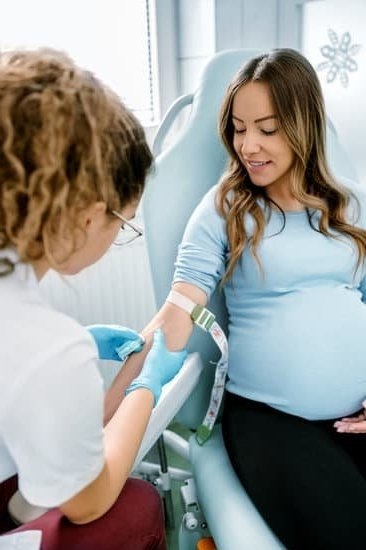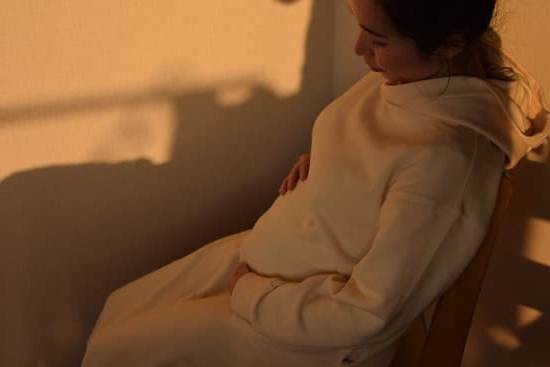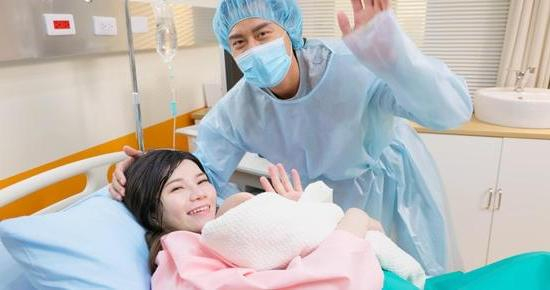When do you start to show pregnancy? The changes that occur in a woman’s body during pregnancy are fascinating and often eagerly anticipated. From the early signs of pregnancy to the gradual physical and emotional changes, each stage brings new developments and experiences. Understanding the stages of pregnancy and when a woman starts to show is important for expectant mothers as they embrace the journey of motherhood.
During weeks 4-12 of pregnancy, internal changes are happening within the woman’s body, even though her baby bump may not be visible yet. This first trimester is characterized by early signs such as fatigue, nausea, and breast tenderness. It is a crucial period for the development of the baby, as vital organs begin to form.
As pregnancy progresses into weeks 13-18, physical changes become more noticeable during the second trimester. The uterus expands and shifts to accommodate the growing baby, leading to a change in body shape that begins to show signs of pregnancy. It is during this time that many women start to embrace their changing bodies and feel a sense of excitement about their pregnancy journey.
There are factors that can affect when a woman starts to show her pregnancy, such as body type and previous pregnancies. These factors can impact how early or late a woman develops a visible baby bump. As we delve deeper into the various stages of pregnancy, we will explore these factors and provide tips for expectant mothers on embracing their changing bodies with confidence and comfort.
Weeks 4-12
During the first trimester of pregnancy, significant internal changes occur in a woman’s body as the embryo rapidly develops and forms various organs. At around 4-6 weeks, many women may start to experience early signs of pregnancy such as fatigue, nausea, breast tenderness, and a heightened sense of smell.
These symptoms are caused by hormonal changes and are often the first indicators that a woman may be pregnant. Weight gain is generally minimal during this time, and most women do not show any visible signs of pregnancy during the first trimester.
Weeks 7-12: The Embryo Develops Rapidly
Between weeks 7-12, the embryo continues to develop rapidly, with major organs and systems starting to form. During this time, the uterus also begins to expand in preparation for the growing fetus. Despite these internal changes, most women still do not show any physical signs of pregnancy during this stage. However, they may start to notice subtle changes in their body such as a slight thickening around the waist or bloating due to hormonal shifts.
The Importance of Prenatal Care During the First Trimester
It is crucial for expectant mothers to seek early prenatal care during these initial weeks of pregnancy. This is when important tests and screenings can be conducted to ensure the health and well-being of both mother and baby. Even though physical signs of pregnancy may not yet be apparent, taking care of one’s emotional and mental health is essential at this stage as well.
Many women experience a mix of emotions during the first trimester, including excitement, anxiety, and mood swings. Seeking support from loved ones or joining a prenatal support group can help alleviate some of these feelings and provide reassurance during this pivotal time.
Overall, while physical signs of pregnancy may not be visible during the first trimester, it is a critical period for both fetal development and maternal well-being. Expectant mothers should focus on managing their symptoms and seeking proper medical care to ensure a healthy pregnancy journey.
When do you start to show pregnancy? For most women, noticeable physical changes typically begin to appear around 12-16 weeks gestation but can vary based on individual factors such as body type and previous pregnancies.
Weeks 13-18
As a woman moves into the second trimester of pregnancy, typically around Weeks 13-18, she may start to notice some gradual physical changes in her body. This period can be an exciting time as the pregnancy becomes more visible, and the baby bump starts to take shape. Understanding what to expect during this stage can help women embrace these changes and feel more prepared for the next few months of their pregnancy journey.
Increased Energy and Decreased Nausea
During the second trimester, many women experience a welcome increase in energy levels and a decrease in the feelings of nausea that are commonly associated with early pregnancy. This may allow expectant mothers to start feeling more like themselves and engaging in activities they enjoy.
Visible Baby Bump
Around Weeks 13-18 is when many women typically begin to show signs of a baby bump. As the uterus continues to expand to accommodate the growing fetus, a woman’s abdomen will gradually begin to protrude, becoming more noticeable and defined as the weeks progress.
Factors such as body type and previous pregnancies can impact how soon or how prominently a woman begins showing, but in general, by the midway point of the second trimester, it is common for the baby bump to become visible.
Physical Changes Beyond the Bump
In addition to a noticeable baby bump, other physical changes may also become apparent during this stage of pregnancy. Women may start experiencing breast growth and tenderness as their bodies prepare for breastfeeding. Some expectant mothers may also notice changes in their skin, such as a “pregnancy glow” due to increased blood flow or temporary darkening of the skin in certain areas. These changes are all normal parts of pregnancy and vary from woman to woman.
Factors Affecting When You Start to Show
Factors impacting when you start to show pregnancy can vary greatly from woman to woman. The timing of when a baby bump becomes visible is influenced by several different elements, including body type and previous pregnancies. Below are some factors that can affect when a woman starts showing her pregnancy:
- Body Type: Women with a smaller build may start to show earlier than those with a larger frame, simply because there is less space for the growing uterus to expand without becoming noticeable.
- Previous Pregnancies: If it’s not your first pregnancy, you may show earlier as your abdominal muscles have already been stretched from previous pregnancies, causing the baby bump to become more apparent.
It’s important to remember that every woman’s body is unique, and there is no one-size-fits-all answer to when you will start showing pregnancy. Ultimately, the timeline for showing a baby bump is individual and can be influenced by various personal factors. It’s essential for expecting mothers not to compare themselves to others but rather focus on the health and well-being of themselves and their growing baby.
As expectant mothers begin to notice their bodies changing, they may experience a range of emotions – excitement, anxiety, or even uncertainty about how they will navigate these physical changes. It’s entirely normal to have mixed emotions when starting to show pregnancy.
Remember that each woman’s journey during pregnancy is different, and it’s okay to feel however you feel as your body starts changing. Embracing these emotions as they arise can help women prepare for their new role as a mother while also preparing mentally for the changes ahead.
Ultimately, it’s crucial for women to take care of themselves emotionally as much as physically during this transformative time in their lives. Seeking support from loved ones and surrounding oneself with positive influences can aid in addressing any worries or fears about showing pregnancy sooner or later than expected.
By focusing on self-care and taking steps towards feeling confident in this new stage of life, expectant mothers can better prepare for the journey ahead while embracing their changing bodies.
Body Changes
During pregnancy, a woman’s body goes through a myriad of changes, both internally and externally. One of the most significant changes that occur is the expansion and shifting of the uterus. This process begins as early as the first trimester, but it becomes more noticeable as the pregnancy progresses into the second trimester.
The uterus, which is normally about the size of a small pear, undergoes remarkable changes during pregnancy to accommodate the growing fetus. As the baby grows, so does the uterus, stretching to many times its original size. This expansion causes not only a change in the shape of the uterus but also a shift in its position within a woman’s abdomen.
These changes in the uterus are directly responsible for the noticeable change in a woman’s body shape as her pregnancy advances. As the uterus expands and shifts, it pushes against other organs and muscles in the abdomen, causing them to move as well. This can lead to physical changes such as a rounding of the belly and an increase in waist circumference.
- The expanding womb
- Shifting internal organs
- Changes in body shape
Emotional Changes
As a woman’s body begins to show signs of pregnancy, it is normal to experience a range of emotions. Many women feel excited at the prospect of becoming a mother and seeing their baby bump grow, while others may feel anxious about the changes happening to their body. These emotions are completely natural and can vary from person to person. Understanding and acknowledging these emotional changes is an important part of the pregnancy journey.
It is common for expectant mothers to experience both positive and negative emotions as they start to show pregnancy. On one hand, the visible baby bump can be a source of joy and excitement as it symbolizes the new life growing inside. On the other hand, some women may feel anxious about their changing appearance, especially if they are concerned about how others will perceive them. Additionally, hormonal fluctuations can also contribute to mood swings during this time.
One important aspect of addressing these emotional changes is establishing a support system. Whether it’s talking to a partner, family member, or friend, having someone you trust to confide in can make a big difference. Seeking out prenatal classes or joining support groups with other expectant mothers can also provide an outlet for sharing experiences and gaining reassurance.
| Emotional Changes | Impact |
|---|---|
| Excitement | Lots of joy at seeing their baby bump grow |
| Anxiety | Concerns about changing appearance or judgment from others |
| Mood Swings | Hormonal fluctuations contributing to varying emotions |
Seeking professional help from a therapist or counselor can also be beneficial for managing any feelings of anxiety or uncertainty. Ultimately, understanding that every woman experiences different emotional changes when starting to show pregnancy is key, and finding healthy ways to cope with these emotions is vital for overall well-being during this special time in life.
Tips for Embracing Your Changing Body
During pregnancy, a woman’s body goes through numerous changes, both physically and emotionally. One of the most visible signs of pregnancy is the development of a baby bump, which can be an exciting and sometimes anxious time for expectant mothers. Many women wonder, “When do you start to show pregnancy?” The answer varies for each woman, but typically, most women start showing during the second trimester, around weeks 13-18.
As the uterus expands and shifts to make room for the growing baby, the abdomen gradually begins to protrude, creating a noticeable change in body shape. Factors such as body type and previous pregnancies can also impact when a woman starts showing. Those with a smaller frame may show earlier due to less space for the expanding uterus, while women who have been pregnant before may show sooner due to muscle memory.
During this period of change, it’s important for expectant mothers to embrace their evolving bodies and feel confident and comfortable in their skin. One tip for embracing these changes is to invest in maternity clothing that not only provides comfort but also makes you feel beautiful and confident. Another piece of advice is to engage in gentle exercise or prenatal yoga to maintain physical health and alleviate stress or anxiety associated with these changes.
Research has shown that feeling good about one’s changing body during pregnancy can lead to improved emotional well-being and overall satisfaction with the pregnancy experience. By practicing self-care, staying connected with loved ones, and seeking professional support when needed, expectant mothers can navigate the physical and emotional changes of pregnancy with confidence and positivity.
| When Do You Start Showing Pregnancy? | 13-18 Weeks |
|---|---|
| Factors Affecting When You Start Showing | body type and previous pregnancies |
| Maternity Clothing Tip | Invest in comfortable yet flattering maternity clothing |
| Fitness Tip | Engage in gentle exercise or prenatal yoga for physical health |
Conclusion
In conclusion, the journey of pregnancy is a remarkable and beautiful experience that involves a series of physical and emotional changes for expectant mothers. From the early signs of pregnancy in the first trimester to the gradual progression of showing a baby bump in the second trimester, it is important for women to understand and embrace these changes.
Each woman’s body is unique, and factors such as body type and previous pregnancies can impact when the baby bump becomes visible. However, it is essential for expectant mothers to remember that every stage of pregnancy is normal and should be celebrated.
As the uterus expands and shifts during pregnancy, it leads to a noticeable change in a woman’s body shape. This physical transformation can have both exciting and anxiety-inducing effects on expectant mothers. It is crucial for women to acknowledge and address their emotional changes during this time, seeking support from loved ones or healthcare professionals when needed. Embracing these body changes positively can greatly impact an expectant mother’s overall well-being.
For women who may feel apprehensive about their changing bodies, it is important to remember that there is no right or wrong way to show pregnancy. Each woman’s journey is unique, and there are various tips and strategies available to help them feel confident and comfortable as their pregnancy progresses.
Whether it’s through embracing maternity fashion, practicing self-care routines, or simply staying connected with other expectant mothers, finding ways to celebrate this special time can make a significant difference in one’s overall experience of pregnancy.
Frequently Asked Questions
Can You Start Showing at 8 Weeks?
It is possible for some women to start showing at 8 weeks, especially if they have been pregnant before. However, every woman’s body is different, so there is no one-size-fits-all answer.
What Is the Earliest You Can Show in Pregnancy?
The earliest a woman can start showing in pregnancy is typically around 12 weeks. This is when the uterus begins to expand beyond the pelvic area and becomes more noticeable. However, this timeline can vary for each individual.
What’s the Earliest You Can Show a Bump?
The earliest a woman can show a bump can be as early as 14-16 weeks into pregnancy. This is when the baby and uterus begin to grow enough to create a visible bump. But again, it’s important to remember that every woman’s body and pregnancy are unique, so this may not be true for everyone.

Welcome to my fertility blog. This is a space where I will be sharing my experiences as I navigate through the world of fertility treatments, as well as provide information and resources about fertility and pregnancy.





